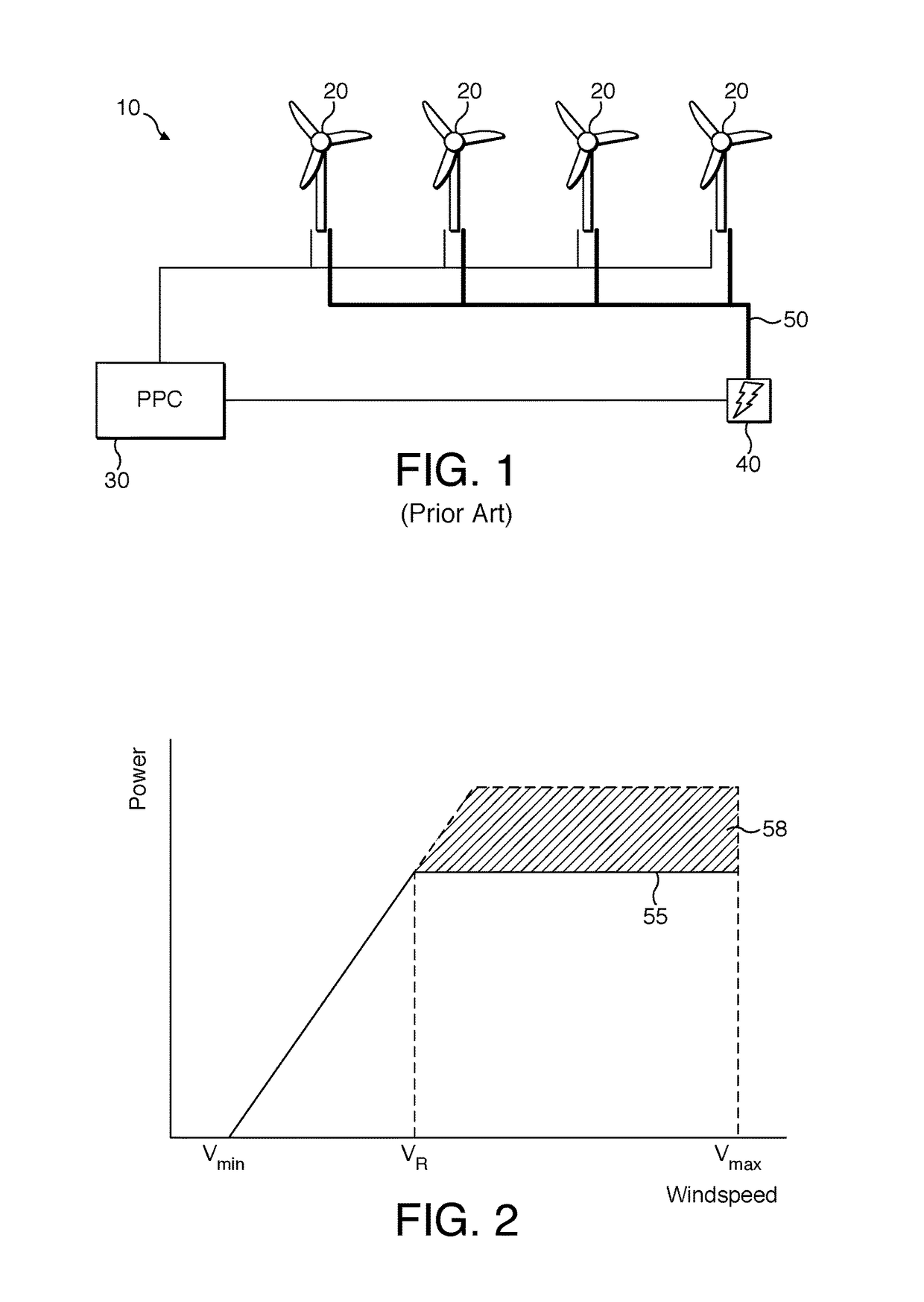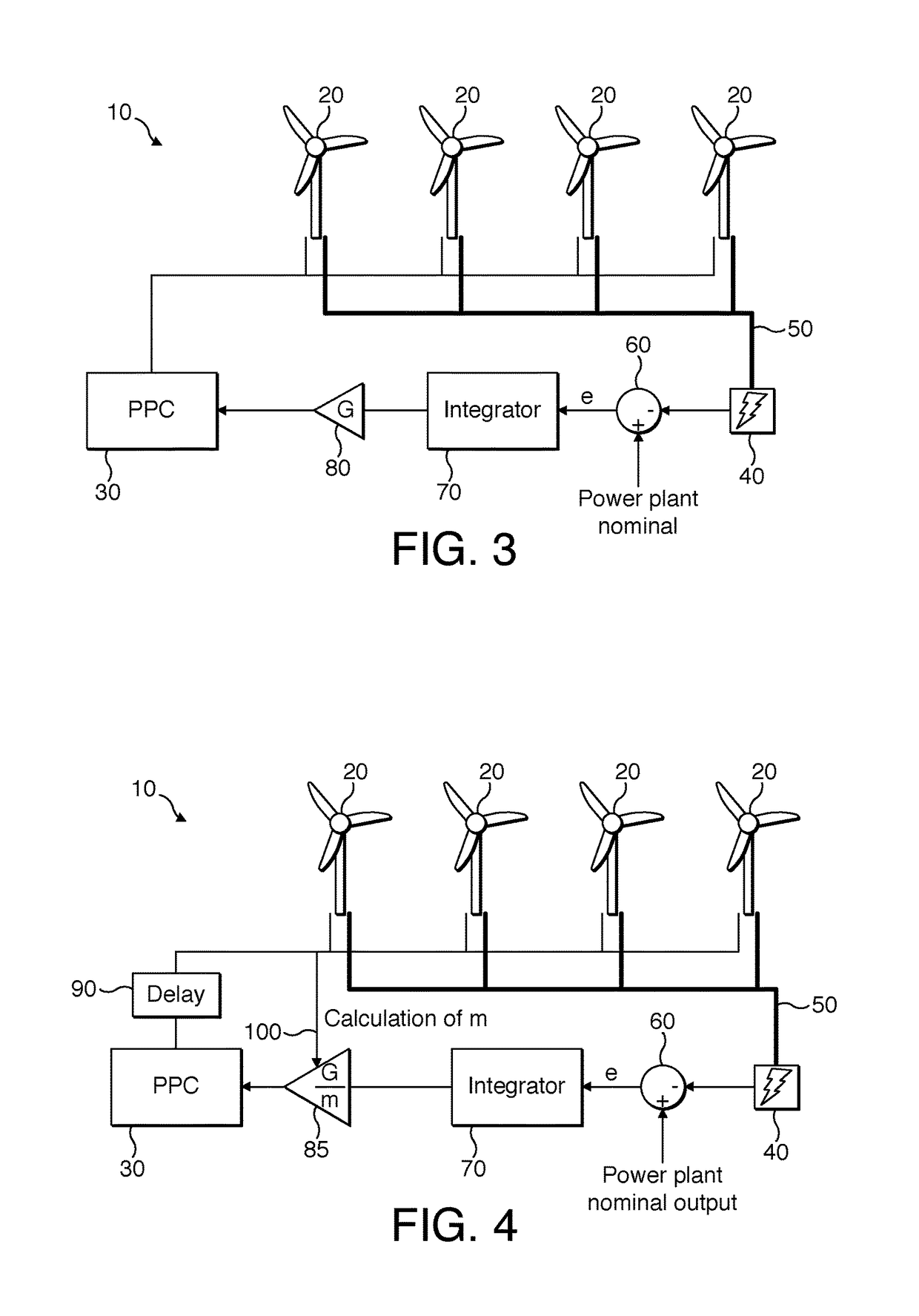Control of wind turbines
a technology of wind turbines and wind power plants, which is applied in the direction of motors, optimizing machine performance, and prolonging engine life, etc., can solve the problems of less than ideal wind, risks damaging the turbines, and the total output of the plant may not reach the rated plant power, so as to reduce the over-rating of the turbine, the risk of damage to the turbine components, and the effect of shortening the life of components
- Summary
- Abstract
- Description
- Claims
- Application Information
AI Technical Summary
Benefits of technology
Problems solved by technology
Method used
Image
Examples
Embodiment Construction
[0034]The following description addresses the general control of turbines in a wind turbine power plant, the control of output power from those turbines, and the optimisation of operating parameters such as speed and torque within individual turbines based on set points provided from the power plant controller. It describes control regimes which are both devised by a multi-turbine controller and sent as commands to individual turbines, and control regimes which are implemented by individual turbines and then communicated to a multi-turbine controller such as a power plant controller.
[0035]FIG. 1 shows, schematically, a conventional wind power plant 10 comprising a plurality of wind turbines 20 each of which communicates with a power plant controller PPC 30. The PPC 30 can communicate bi-directionally with each turbine. The turbines output power to a grid connection point 40 as illustrated by the thick line 50.
[0036]In operation, and assuming that wind conditions permit, each of the ...
PUM
 Login to View More
Login to View More Abstract
Description
Claims
Application Information
 Login to View More
Login to View More - R&D
- Intellectual Property
- Life Sciences
- Materials
- Tech Scout
- Unparalleled Data Quality
- Higher Quality Content
- 60% Fewer Hallucinations
Browse by: Latest US Patents, China's latest patents, Technical Efficacy Thesaurus, Application Domain, Technology Topic, Popular Technical Reports.
© 2025 PatSnap. All rights reserved.Legal|Privacy policy|Modern Slavery Act Transparency Statement|Sitemap|About US| Contact US: help@patsnap.com



